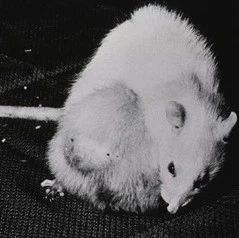卵巢癌细胞能够转化环境中的正常细胞,使这些细胞支持癌细胞生长,近日科学家们揭示了这一转化过程的机制,并为癌症治疗提供了新靶点。

癌细胞也会重编程
在美国癌症研究协会旗下的Cancer Discovery杂志12月刊上,芝加哥大学和西北大学的研究人员发表了一项研究,研究显示卵巢癌细胞能够改变邻近正常细胞中三种microRNA的合成。microRNA是基因表达的重要调节因子。
microRNA能够通过改变基因表达来影响细胞功能,它们会将正常健康的成纤维细胞转变为癌相关成纤维细胞CAF。而癌相关成纤维细胞CAF会产生化学信号促进癌细胞增殖、侵入健康组织并转移到其他地方。现在,研究人员通过逆转microRNA信号,成功将癌相关成纤维细胞转变为正常的成纤维细胞。
“这些癌支持细胞是潜在的新癌症治疗靶点,”该文章的作者之一,芝加哥大学妇产科教授Ernst Lengyel说。“癌细胞突变很快,因此它们很容易对治疗产生抵抗。但癌相关成纤维细胞在遗传学上是稳定的,”他说。“它们的有害行为是由microRNA驱使的,而抑制这些信号就是抗击癌症的新途径,不仅可以瓦解癌细胞的支持系统,也不大可能演化出抗性。”
“对于卵巢癌来说,”Lengyel补充道,“我们急需新的治疗方式。”这一领域如今已多年没有新方法进入临床了,患者预后也没有得到明显改进。
成纤维细胞是结缔组织的主要细胞成分,它们为其他组织提供结构框架,并且有助于伤口愈合。当富含成纤维细胞的组织被癌细胞侵袭时,“癌细胞与成纤维细胞之间的密切交流”会将成纤维细胞转变为癌相关成纤维细胞,
“科学家们才刚开始学会将正常细胞重编程为多能干细胞,”文章作者,西北大学医学教授Marcus Peter说。“我们的研究显示,癌细胞有能力将环境中的正常细胞重编程,让它们支持癌细胞生长,而这一过程涉及了microRNA。”
研究显示癌细胞使成纤维细胞中的两种microRNA合成减少(miR-31和miR-214),而miR-155的合成增加。microRNA通常阻断基因表达,其水平减少会提高一些目标基因的表达,大多数这样的基因都与CAF相关化学信号的形成有关。
研究显示,上述信号中上调最高的是CCL5,而CCL5是“关键的促肿瘤因子”。研究人员将人类卵巢癌细胞和CAF同时注入小鼠体内,肿瘤细胞很快便会取代正常卵巢结构。而可中和CCL5的抗体可以抑制这一过程。
“研究中使用的是来自患者的肿瘤细胞和CAF,而非细胞系,”Lengyel说,他是专长手术手术治疗卵巢癌的妇产科肿瘤学家。“我们的模式系统尽可能的贴近真实病情。”现在人们已经在研发靶标癌细胞microRNA的治疗手段,而这系那个研究显示,还可以通过改变癌相关成纤维细胞中的microRNA来治疗癌症。

 MicroRNAs Reprogram Normal Fibroblasts into Cancer-Associated Fibroblasts in Ovarian Cancer
MicroRNAs Reprogram Normal Fibroblasts into Cancer-Associated Fibroblasts in Ovarian Cancer
Mitra AKZillhardt MHua YTiwari PMurmann AEPeter MELengyel E
Cancer-associated fibroblasts (CAF) are a major constituent of the tumor stroma, but little is known about how cancer cells transform normal fibroblasts into CAFs. microRNAs (miRNA) are small noncoding RNA molecules that negatively regulate gene expression at a posttranscriptional level. Although it is clearly established that miRNAs are deregulated in human cancers, it is not known whether miRNA expression in resident fibroblasts is affected by their interaction with cancer cells. We found that in ovarian CAFs, miR-31 and miR-214 were downregulated, whereas miR-155 was upregulated when compared with normal or tumor-adjacent fibroblasts. Mimicking this deregulation by transfecting miRNAs and miRNA inhibitors induced a functional conversion of normal fibroblasts into CAFs, and the reverse experiment resulted in the reversion of CAFs into normal fibroblasts. The miRNA-reprogrammed normal fibroblasts and patient-derived CAFs shared a large number of upregulated genes highly enriched in chemokines, which are known to be important for CAF function. The most highly upregulated chemokine, CCL5, (C-C motif ligand 5) was found to be a direct target of miR-214. These results indicate that ovarian cancer cells reprogram fibroblasts to become CAFs through the action of miRNAs. Targeting these miRNAs in stromal cells could have therapeutic benefit.
文献链接:MicroRNAs Reprogram Normal Fibroblasts into Cancer-Associated Fibroblasts in Ovarian Cancer






